
Prepupal larva of Pyractomena borealis (Randall), with tail glued down, in a head-down position on a tree trunk. The position it selected is protected by corky growths on the bark, including one that forms a partial roof. In the single known case of apparent predation, this firefly was replaced in its little niche by a spider. |
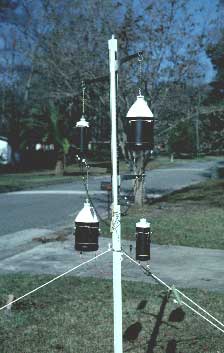
Physical models of trees of different diameters. Model fireflies, blackened clay spheres with thermocouples, are positioned in the primary compass directions on each sand-filled photographic jug. In this setup, the influence of tree diameter and height above the cold winter ground was being examined. |
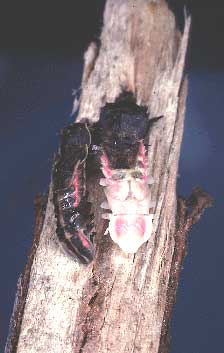
Two Pyractomena borealis pupae hanging out of their larval skins, held there by projections at the postero-lateral corners of their dorsal abdominal plates. The older pupa at the left is completely tanned, and the teneral, pink and white one had eclosed within the hour. |
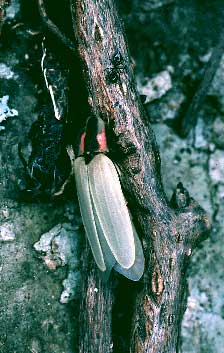
A newly eclosed and teneral adult Pyractomena borealis, standing on the vine where it pupated. Its larval and pupal skins are at the left of the vine. White tracheal linings remain attached to the pupal exuvium. An ant, perhaps Crematogaster ashmeadi, looks on. |
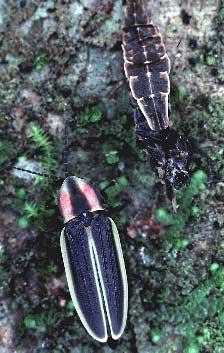
A recently eclosed male Pyractomena borealis, tanned and ready for its first nocturnal flight, stands next to its larval and pupal skins in a "bed of moss" on a tree trunk. |
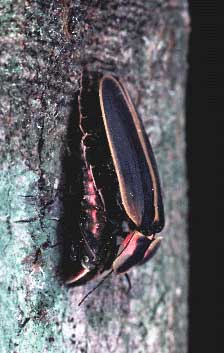
An adult male Pyractomena borealis stands on top of a Py. borealis pupa. Preliminary evidence suggests that males cannot determine the sex of the pupae that they attend, and that males will not joust or fight for "ownership." |